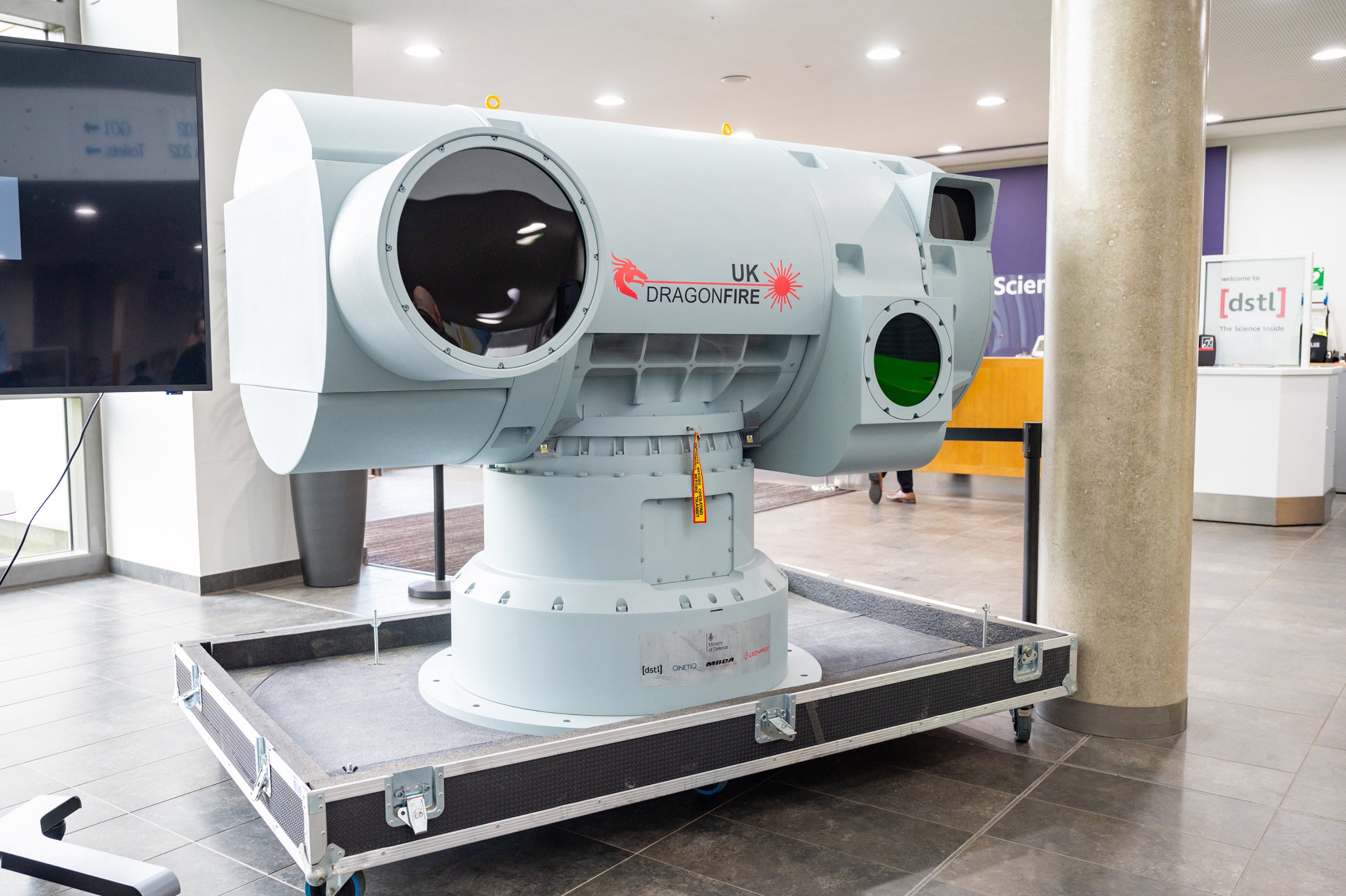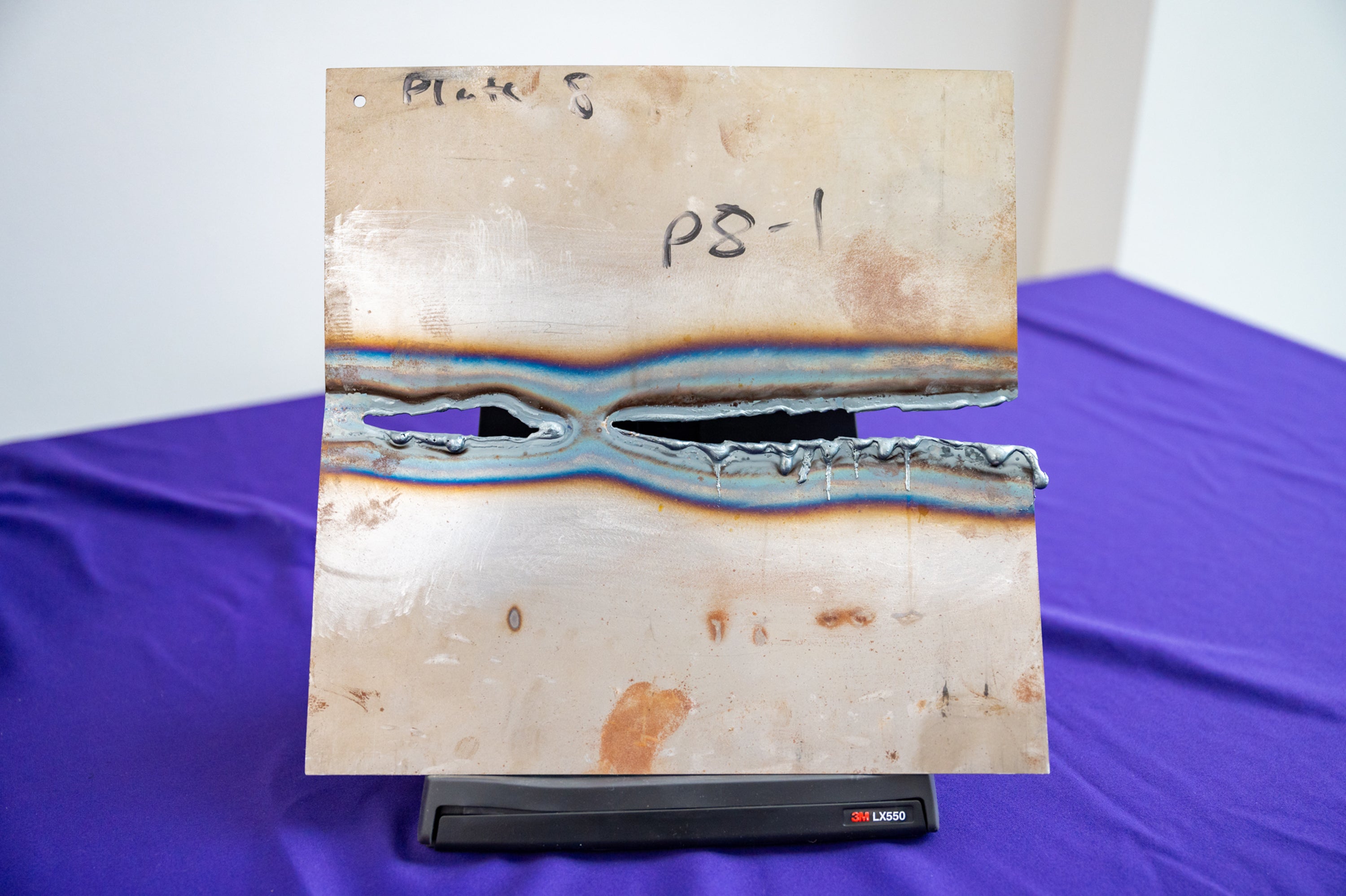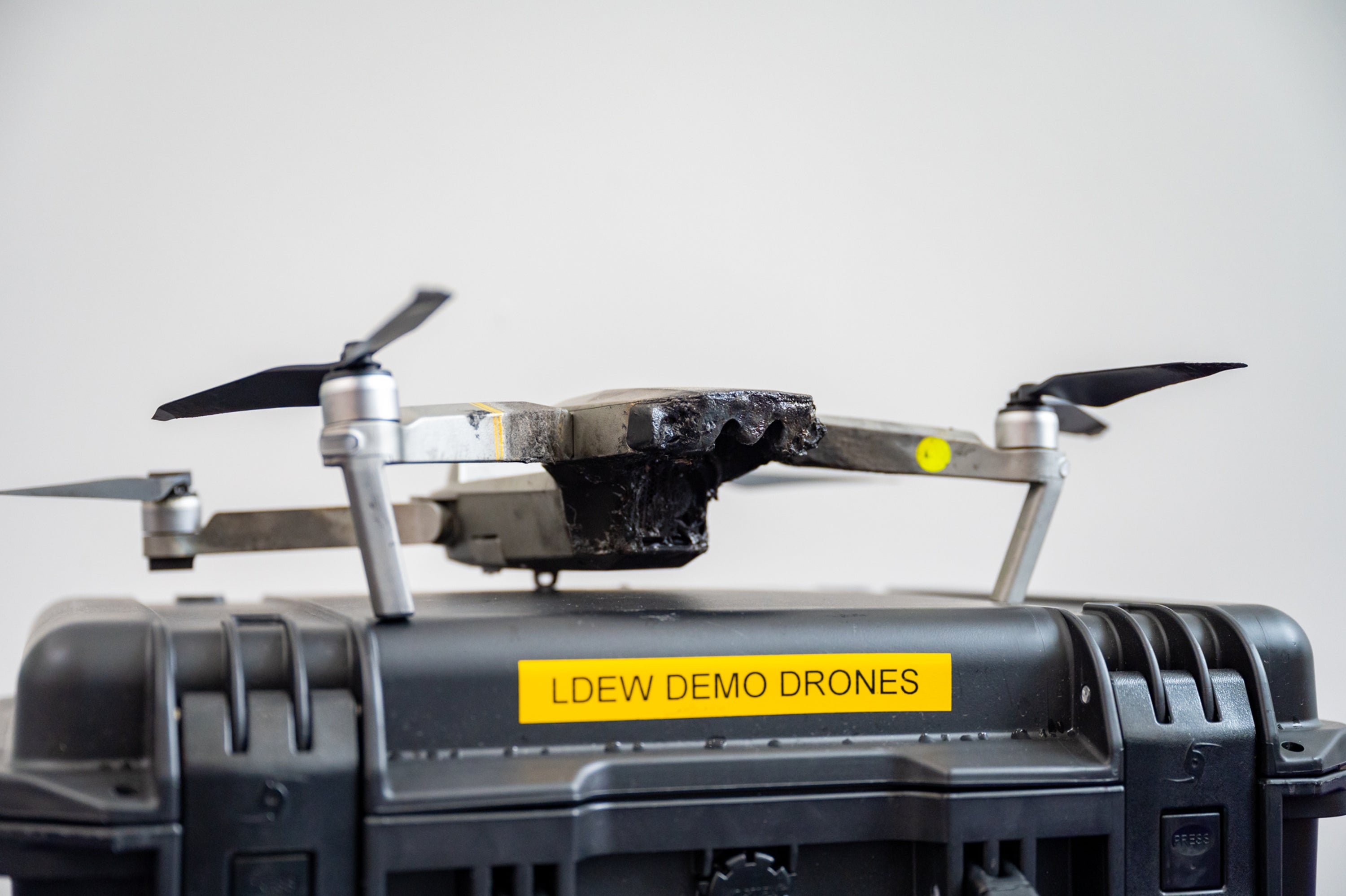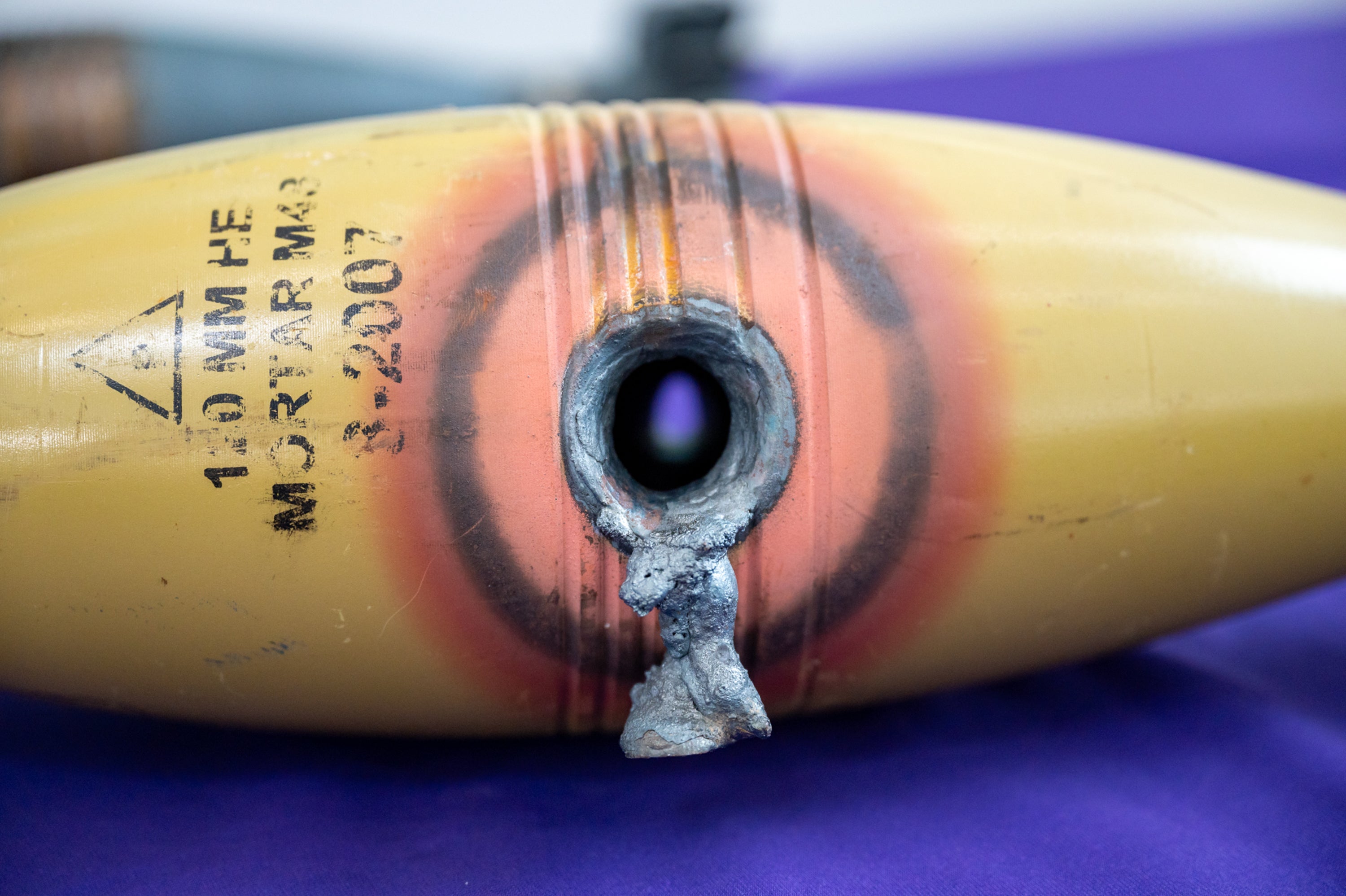British military laser could appear on front line in Ukraine to take down Russian drones
The DragonFire system uses a beam to hit and destroy targets at the speed of light
Your support helps us to tell the story
From reproductive rights to climate change to Big Tech, The Independent is on the ground when the story is developing. Whether it's investigating the financials of Elon Musk's pro-Trump PAC or producing our latest documentary, 'The A Word', which shines a light on the American women fighting for reproductive rights, we know how important it is to parse out the facts from the messaging.
At such a critical moment in US history, we need reporters on the ground. Your donation allows us to keep sending journalists to speak to both sides of the story.
The Independent is trusted by Americans across the entire political spectrum. And unlike many other quality news outlets, we choose not to lock Americans out of our reporting and analysis with paywalls. We believe quality journalism should be available to everyone, paid for by those who can afford it.
Your support makes all the difference.The production of laser energy and radio waves – viewed once as weapons of the future – are being fast-tracked in Britain for the battlefields of Ukraine and Red Sea passages coming under Houthi attacks.
The DragonFire system, which uses a beam to hit and destroy targets at the speed of light, and radio frequency hits taking out an adversary’s power supplies, will be tested by the Royal Navy and the Army next month in preparation for operational deployment.

The system, which the Ministry of Defence holds is world-leading, is due to be operational in three years time. But defence secretary Grant Shapps holds that one could not wait to get a system absolutely perfect in such dangerous times, and getting them ready for combat in the fastest time possible is the priority.
“In a more dangerous world, our approach to procurement is shifting. We need to be more urgent, more critical and more global .... Let’s say that it didn’t have to be 100 per cent perfect in order for Ukrainians perhaps to get their hands on it – 2027 is still the date as of this moment. But of course I’ll look to see what we can do to speed up,” he said.

The LDEW (Laser Directed Energy Weapon) is already “a game changer”, say defence scientists, highlighting its ability to strike something as small as a £1 coin from a kilometre away. The radio frequency outlets, meanwhile, can severely weaken enemy defences by cutting off communications and electricity.
As well as its lethality, the weapons system will enable massive savings, delivering a destructive shot for £10 pounds a shot compared to missiles costing £1.5m being used, for example, to shoot down Houthi rockets and drones.
The lasers will be positioned on the Navy’s Type 23 frigates and, in future, on Wolfhound armoured personnel carriers. The Frequency “demonstrators” will be strapped to the Army’s Man SV vehicles.
The weaponry, claimed to be “world leading” by the Ministry of Defence, is being produced by the government’s Dstl (Defence Science and Technology Laboratory) and private sector defence firms MBDA, Leonardo and QinetiQ at the UK’s top secret research centre at Porton Down, near Salisbury.

During a visit to the facility, Mr Shapps said he would seek to up the pace of development to try and ensure they can be used in Ukraine and the Red Sea.
“I’ve come down to speed up the production of the DragonFire laser system because I think given that there’s two big conflicts on, one sea-based, one in Europe, this could have huge ramifications to have a weapon capable particularly of taking down drones,” he said.
“On incoming drones, it doesn’t take much imagination to see how that could be helpful in Ukraine for example. So I want to speed up what would usually be a very lengthy development procurement process, possibly up to 10 years, to a much shorter timeframe to get it deployed, potentially on ships, incoming drones, and potentially on land.”
A new arms procurement process in place is “designed to not wait until we have this at 99.9 per cent perfection before it goes into the field, but get it to sort of 70 per cent and then get it out there and then... develop it from there”, he added.
Dstl is fully prepared to work at maximum speed on the weapons project. Reacting to their upcoming tests by the British military, chief executive Paul Hollinshead said: “This is excellent news, and a real step forward in enabling operational advantage at pace for UK Defence.”

A number of other countries are carrying out research into the use of lasers and radio frequency for combat including the US. The Pentagon, however, says there will be a considerable time gap before it can be deployed for combat.
The US Government Accountability Office (GAO) has stated that more needs to be done to get them into the military. “DOD ( Department of Defence) has long noted a gap – sometimes called “the valley of death” – between its development and its acquisition communities that impede technology transition,” it said in a report.
Matt Cork, a programme manager in the project, said fresh and innovative approaches are being taken to cut the time it takes to get the weapons to the military.
“We are fully aware of the ‘valley of death’ and one way to avoid it is to ensure we work in full cooperation with our partners in every stage of the process, there is real teamwork and a lot of wider interest in what is being achieved”, he said.
James Black, assistant director, defence and security, for the think-tank RAND Europe commented “low-cost drones and rockets have swung the economic calculus of offense and defense in favour of those using large volumes of cheap unmanned systems and munitions to overwhelm more-sophisticated air and missile defences... systems like DragonFire can swing back that calculus”.
Robert Emerson, a defence analyst, agreed that laser weapons and offensive radio frequency are of great benefit in confronting hostile states and insurgent groups using asymmetric warfare.
But, he cautioned “adverse weather conditions rain can be detrimental to the beams by dissipating it. There is a need for cooling systems, and battery recharging facilities. And, obviously, one has to be extremely careful of possible accidental fatal impact on civilian aircraft and other possible collateral damage”.
Join our commenting forum
Join thought-provoking conversations, follow other Independent readers and see their replies
Comments